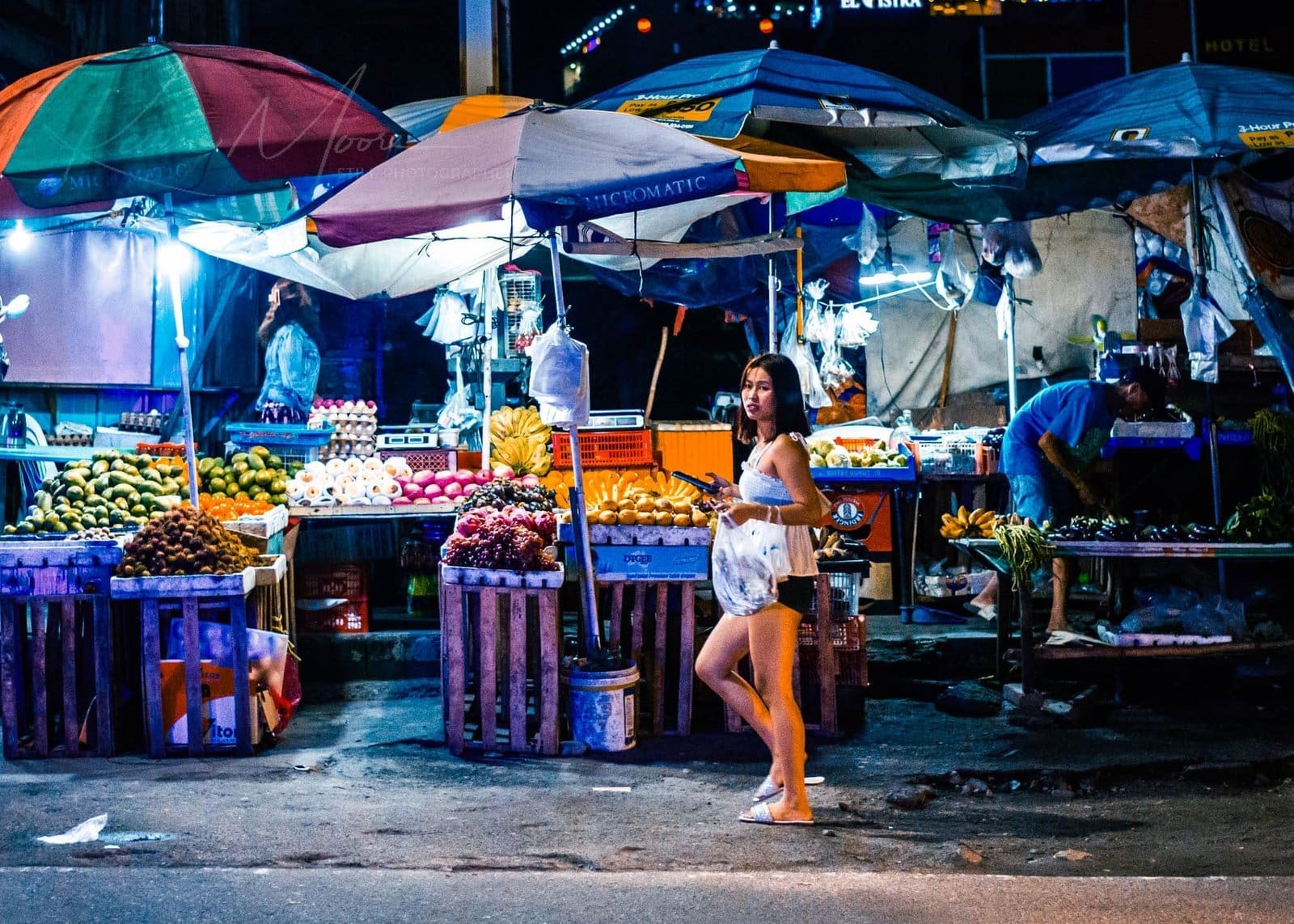
The Vibrant Essence of a Philippines Night Market
As I stood amidst the vibrant energy of the Philippines Night Market, there was a harmony between the hustle of the bustling crowd and the serenity of the overhead night lights. I couldn’t help but feel a deep connection to this urban tapestry, a blend of sights, sounds, and smells that stirred a profound sense of cultural pride within me. Capturing this scene was like encapsulating a moment of life itself, a colorful snapshot of urban life that resonates with the soul of the city and its people.
Capturing Urban Life through Leica Photography
The photograph reflects a night spent wandering through a lively street market in the Philippines, an epitome of street culture where life takes on a particularly vibrant hue under the glow of artificial lights. This setting is a unique playground for any street photographer, offering endless opportunities for candid photography and the chance to document genuine moments of daily life. In such a dynamic environment, the choice of tools is crucial, and the versatile capabilities of the Leica M11 came particularly handy in this scenario. Renowned for its ability to capture detailed and vivid nighttime shots, this camera allowed me to document scenes with precision and emotion, perfectly conveying the hustle and bustle of Philippine urban life.
The image’s aesthetic, whether in color or black and white, tells a different story. Color photography presents the market’s lively hues, echoing the warm, rich energy of Filipino culture. Each stall, each vendor, bursts with colors that speak of tradition and modernity intertwined, from the vivid reds and yellows of fruits and vegetables to the subdued tones of handcrafted goods. In contrast, a black-and-white rendition simplifies these elements, emphasizing textures and shadows. This approach highlights contrast and invites viewers to focus on the interactions and expressions of the market’s patrons, enhancing the candid nature of street photography.
Techniques and Insights from the Street
Understanding the nuances of street photography involves more than just technical skills; it’s about being able to blend into the surroundings and capture authentic moments without disruption. This is particularly true in a setting like a Philippines Night Market, where the line between observer and participant can easily blur. The infectious rhythm of the market offers a permissive atmosphere, allowing photographers to engage with their subjects organically.
Street photography requires a keen eye for detail, an ability to anticipate moments before they unfold. In such lively environments, photographers must remain alert, moving seamlessly through the crowds to catch that perfect candid shot. One technique I find invaluable is waiting for the picture to come together, rather than chasing it. It’s about patience and being attuned to the ebb and flow of human activity.
The Cultural Pulse of the Philippines Night Market
For anyone wishing to dive deeper into these photographic techniques and tools, this Philippines Night Market offers a significant source of inspiration. The market serves as more than just a hub for economic exchange; it is a melting pot where cultural identities converge. Each stall tells its own story, providing a glimpse into the varied tapestry of Filipino life.
The market is also a testament to the resilience and spirit of the Filipino people. Markets like these have been a staple in Filipino communities for generations, offering a sense of continuity and community. The sights and sounds, from the playful banter between vendors and customers to the irresistible aromas of street food, highlight the country’s rich heritage.
Reflections on Urban and Cultural Narratives
Reflecting on the Philippines Night Market through the lens of street photography offers profound insights into both the art form and the cultural environment it documents. Street photography’s informal yet deliberate nature captures moments that might otherwise be overlooked, providing a narrative that is both immediate and timeless. In this sense, photographing the market transcends mere documentation; it becomes a vivid celebration of life itself.
By capturing these scenes, photographers shine a light on the vibrant street culture and urban beauty inherent in places like the Filipino market. Each photograph serves as a reminder of how seemingly ordinary moments are imbued with significance. They call upon the viewer to appreciate the details of urban life and the underlying stories they tell.
In the end, the Philippines Night Market becomes more than a place; it becomes an embodiment of urban authenticity and cultural pride. Through the careful calibration of the photographer’s lens and the spirited energy of this cultural mainstay, the market’s essence is captured, its pulse felt by all who view such an image. This is the magic of street photography—capturing the unseen, the unspoken, and bringing it to life.
